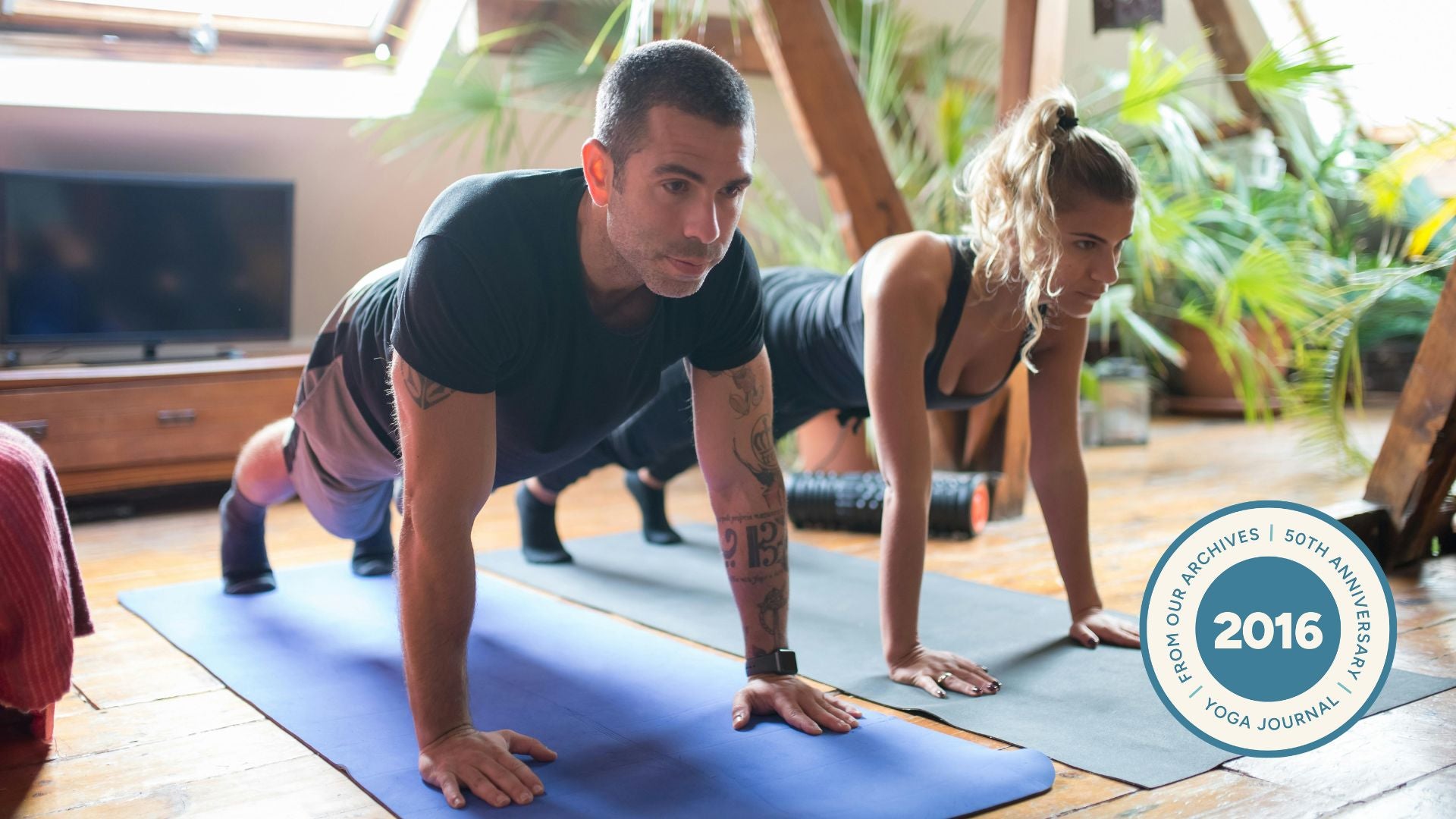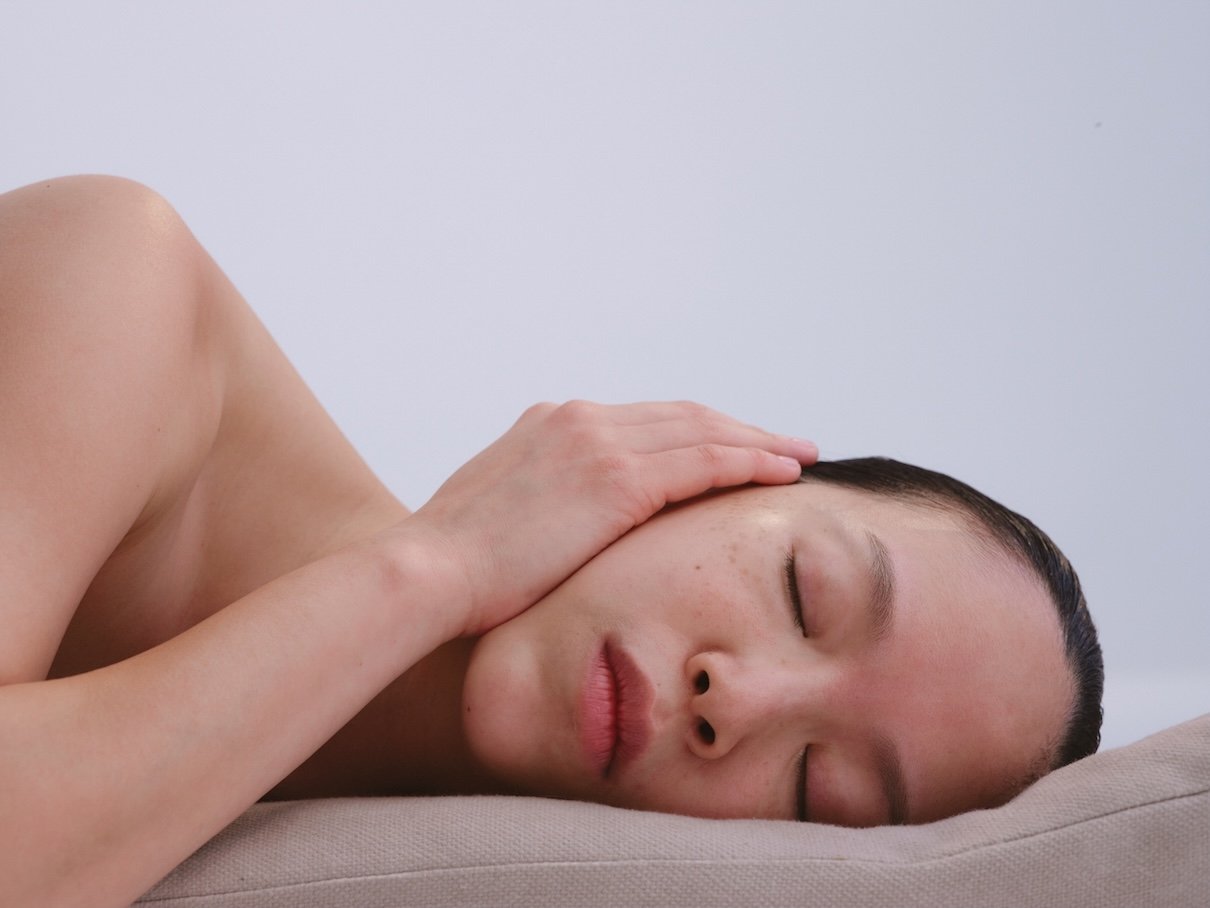“], “filter”: { “nextExceptions”: “img, blockquote, div”, “nextContainsExceptions”: “img, blockquote, a.btn, a.o-button”} }”>
Heading out the door? Read this article on the new Outside+ app available now on iOS devices for members!
>”,”name”:”in-content-cta”,”type”:”link”}}”>Download the app.
For many, taking a sip of water during hot yoga class feels as intuitive as, say, skipping Chaturanga if you’re feeling spent. But recently, influencer Roma Abdesselam received an unexpected admonishment as she reached for her water bottle. After the instructor “bullies” her for rehydrating, Abdesselam decided to roll up her mat and leave class early.
The influencer then expressed her surprise and outrage on TikTok to her 650,000-plus followers. The exchange and ensuing publicity ultimately led the studio to drop the teacher from its schedule. But the incident also draws attention to the question of hydration and safety in hot yoga classes everywhere. Namely, how do you stay hydrated during hot yoga as your body responds to working out in steamy 90-degree-plus conditions?
What Happens to Your Body During Hot Yoga?
During a 60- to 90-minute hot yoga class, your body adjusts to its environment by increasing your heart and respiration rates as well as (you guessed it) sweating. Your body’s objective is to cool you down, but it needs water to accomplish that task, explains hot yoga teacher and registered dietitian Brittany Brown.
The process of sweating is what’s called a thermoeffector, or a physiological mechanism for controlling your body temp. As sweat evaporates from your skin, you release heat into the environment around you. But limiting fluid intake during this process may compromise your body’s ability to dissipate heat, warns exercise physiologist Leslie Funk. “As plasma volume decreases, the body’s ability to lose heat is compromised,” explained Funk in an article for The International Association of Yoga Therapists.

“This means a 150-pound person who loses three pounds during a ‘hot’ yoga class from increased sweating will experience increased heart rate and decreased blood volume, causing a loss of endurance,” wrote Funk. It also has the potential to cause other, more serious inefficiencies in your body.
The question of how much water you need during hot yoga, scientifically speaking, remains up for debate. According to a study published by The Physiological Society, participants in a 90-minute Bikram yoga class heated to 105 degrees Fahrenheit lost 1.9 percent total body water by sweating 1.54 liters. Because the results suggested that these conditions led to a depletion of extracellular fluid volume (fluid that is not contained in the cells) rather than dehydration, researchers concluded that “it is not necessary to drink large volumes of fluid during Bikram yoga,” as long as you’re replenishing water and salt after the fact.
However, Brown points out that even if the water loss in your body is extracellular, your body is always trying to balance itself out. “After you’ve depleted some of that extracellular fluid, your body is going to naturally start to pull some of the intracellular fluid out just to try to reregulate. That’s where that deeper dehydration might come from, because you still require a certain amount of fluid for your body to function normally,” she says.
Some schools of hot yoga, such as Bikram, which is reportedly the style of class Abdesselam was taking, tend to encourage students to abstain from drinking water. “Their reasoning is to stay present in practice. No interruptions,” explains hot yoga instructor Whitney Berger. Some teachers also cite the practice of cultivating tapas, a principle of yoga focused on building internal heat to work through obstacles, as a reason not to break for a sip. However, most contemporary thinking errs on the side of safety over an extreme interpretation of a philosophical concept.
So How Do You Stay Hydrated During Hot Yoga?
How well you’ve hydrated before class will, obviously, also affect how quickly you become dehydrated. If you had a large glass of water and ample sodium and other electrolytes prior to class, you might feel okay not reaching for your water while you’re on the mat. On the other hand, if you went out drinking the night before and rolled out of bed fifteen minutes before class (no judgment here), you will probably find yourself craving more water breaks.
Dehydration typically presents as symptoms such as dizziness, headache, and fatigue. Other indicators of the body’s struggle to regulate itself include confusion, rapid heart rate, and vomiting or diarrhea.
The question of how quickly you become dehydrated in yoga class is highly personal. Only you know how it feels to be inside your body, so it’s essential to tune into your hydration needs as the hot yoga class goes on. Is your mouth dry? Is your heart racing? Are you feeling dizzy or overheated? If so, consider hanging out in Child’s Pose or stepping out of class and taking in some water—as well as A/C—in the lobby.

Also, if you practice any form of hot yoga, prepare adequately. “Hydration isn’t something that begins and ends with class. It’s a lifestyle habit, especially if you’re practicing hot yoga regularly,” says Veronica Najera, director of education and yoga teacher at YogaSix. “I always encourage students to think of hydration and nutrition as part of their yoga routine—not just as something to remember once they start sweating. Being proactive with water, minerals, and rest helps your body adapt and thrive in the heat.”
Hot yoga teacher Stephanie Acosta takes a similar approach. “I honestly have told students that the water you drink today is for your class tomorrow,” she explains. That said, having a sloshing belly full of water for moves that involve twisting movements, such as a revolved lunge or seated twist, can feel uncomfortable and may distract you from the pose. “I usually say to have small sips when [students] feel it’s necessary and to use their judgement,” says Acosta.
Berger actively prompts students to drink water during periods of transition. “My favorite time to remind students to take some water is during a sequence switch, especially if going from the standing to the floor part of the class. It flows well without interrupting the workout,” she says.
Teachers can also watch students for visible signs of dehydration, especially in smaller classes. “When I notice any of these, I’ll often offer a general cue to the class like, ‘Feel free to come down into Child’s Pose, grab water anytime, or walk out of the hot room to take a break,’” says Najera. “It’s supportive rather than calling anyone out directly. I also remind students that the floor is significantly cooler than standing height, so coming down to Savasana or even sitting cross-legged can help the body regulate temperature.”
Ultimately, though, the responsibility rests on the student. Once you’ve rolled out your mat, defer to your judgment and no one else’s. Period. Sometimes, listening to your body means taking one small sip of water in a 90-minute hot yoga session; other times, it could mean leaving early to look out for yourself. As Najera explains, “The most advanced thing you can do in yoga is listen to your body with honesty and respond with care.”







